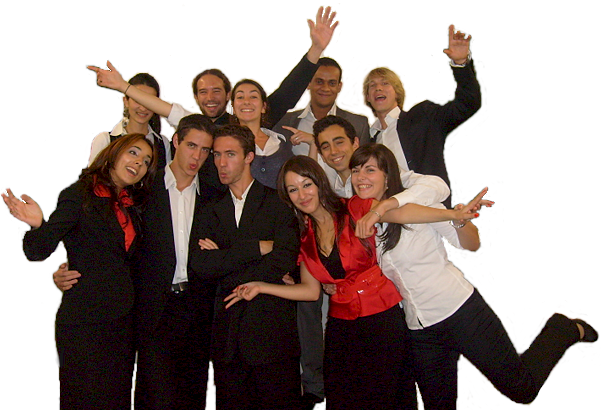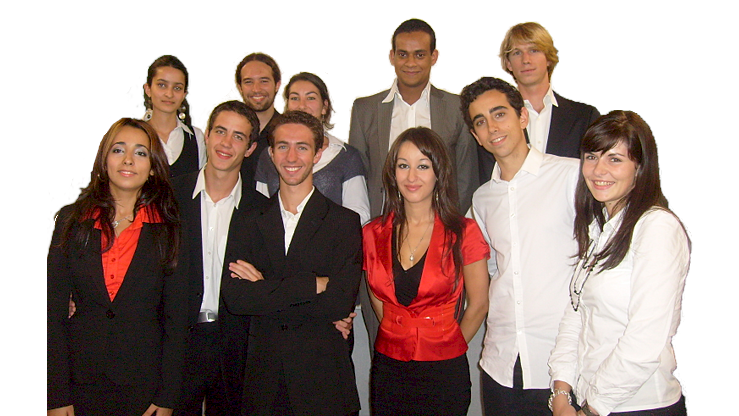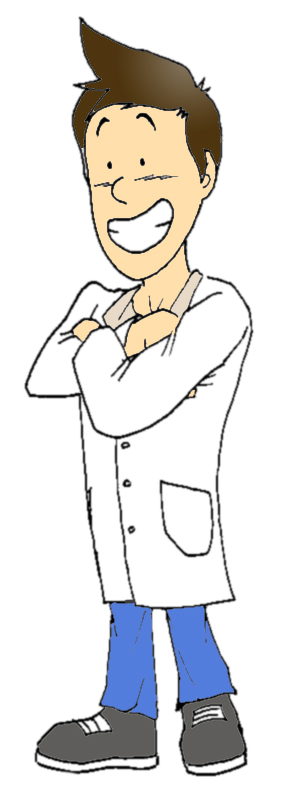Team:SupBiotech-Paris/Team
From 2009.igem.org
Enguerrand (Talk | contribs) (→Team) |
Enguerrand (Talk | contribs) (→Team) |
||
| Line 28: | Line 28: | ||
| - | '''Enguerrand HABRAN''', 5th year student specialized in R&D in biotechnologies, has created and managed a team of 11 students during this adventure and brought the [[Team:SupBiotech-Paris/ | + | '''Enguerrand HABRAN''', 5th year student specialized in R&D in biotechnologies, has created and managed a team of 11 students during this adventure and brought the [[Team:SupBiotech-Paris/Concept#DVS|DVS]] project to a successful conclusion. Throughout his professional experience, he has acquired multiple competences in the realm of entrepreneurial and management skills, in particular by being repeatedly project leader. <br> |
Passionate of science, he has conceived all through his curriculum an innovative concept based on a [[Team:SupBiotech-Paris/Introduction1#drapeau|vectorization]] principle. Convinced of its feasibility, he has chosen to pursue his research in order to create a prototype. To reach his goal, he has studied feverishly publications and has turned towards the grand names of the field. Once he had the sufficient theoretical knowledge, he developed his experimental competences in the laboratory of Professor COUVREUR, working on an anti-cancer nano-particle. <br> | Passionate of science, he has conceived all through his curriculum an innovative concept based on a [[Team:SupBiotech-Paris/Introduction1#drapeau|vectorization]] principle. Convinced of its feasibility, he has chosen to pursue his research in order to create a prototype. To reach his goal, he has studied feverishly publications and has turned towards the grand names of the field. Once he had the sufficient theoretical knowledge, he developed his experimental competences in the laboratory of Professor COUVREUR, working on an anti-cancer nano-particle. <br> | ||
Combining theory and experimentation, he brought to light the underlying problems of vectorisation and elaborated with the rest of the team a [[Team:SupBiotech-Paris/Introduction1Fr#DVS|double vectorisation system (DVS)]] to provide an answer. <br> | Combining theory and experimentation, he brought to light the underlying problems of vectorisation and elaborated with the rest of the team a [[Team:SupBiotech-Paris/Introduction1Fr#DVS|double vectorisation system (DVS)]] to provide an answer. <br> | ||
Revision as of 15:59, 20 October 2009
A team is defined by two criteria: its members and the way it articulates itself. Come discover the characteristics of our team…
Team Strategy
Several elements are crucial for de development of an innovative project:
- the concept,
- the theoretical development that enables the building of a prototype,
- the experimental development that enables the validation of the prototype,
- the providing of technical and material needs,
- the foreseeing of ethic and social problems brought about by the project,
In this aim, we have structured our team as follows:
A management team, with experience in the development of innovative projects and a full vision on how to deal with them.
A R&D team to validate the theoretical and experimental concept.
A communication team to meet the internal and external needs of the project.
Team
Here is the story of our team throughout iGEM 2009:
Enguerrand HABRAN, 5th year student specialized in R&D in biotechnologies, has created and managed a team of 11 students during this adventure and brought the DVS project to a successful conclusion. Throughout his professional experience, he has acquired multiple competences in the realm of entrepreneurial and management skills, in particular by being repeatedly project leader.
Passionate of science, he has conceived all through his curriculum an innovative concept based on a vectorization principle. Convinced of its feasibility, he has chosen to pursue his research in order to create a prototype. To reach his goal, he has studied feverishly publications and has turned towards the grand names of the field. Once he had the sufficient theoretical knowledge, he developed his experimental competences in the laboratory of Professor COUVREUR, working on an anti-cancer nano-particle.
Combining theory and experimentation, he brought to light the underlying problems of vectorisation and elaborated with the rest of the team a double vectorisation system (DVS) to provide an answer.
After that, he selected, for the iGEM adventure, the students of the team according to their competences related to the project.
Enguerrand decided to take the lead of the R&D team and entrusted the communication team to Gaëlla AZZI.
Due to their common and complementary experiences in the creation and development of projects, Enguerrand was convinced of the asset of having Gaëlla at his side in the iGEM project. Being a 5th year student specialized in Commercial Marketing in biotechnologies, she has obtained her competences throughout various professional experiences.
All along the iGEM adventure, she has managed a team of 3 students with whom she prospected the market for sponsors. She has been brought to negotiate and oversee the orders of laboratory material suppliers so as to satisfy the internal needs of the R&D team.
She them turned her attention to the external problems of the project, particularly the ethic and social questions that were brought up by our concept. She thus supervised the creation of an ethics conference focused on synthetic biology.
It is especially their double competence in the scientific and communication fields that have rendered them interesting for this adventure.
A good visualisation of the concept and understanding of the ethic and social questions brought up by it, aided by the numerous experiences in this field, have enabled Ranya to lead as best as possible the ethics conference and Emma to answer questions based on Safety.
The concept had already been defined when the iGEM adventure started out. We knew the characteristics of our vector and target cell, yet many questions remained unanswered.
Damien PARELLO, a 5th year student specialized in R&D in biotechnologies, was assigned the task of studying our target cell and its mutations. He studied its membrane proteins in order to determine THE protein that would be specific of our target cell.
Thus, he established that the protein c-kit is solely found on the membrane of our target cell. He then identified the target protein of this receptor and designed its BioBrick. One of the proteins of our phage is now adorned with this BioBrick, enabling him to target our interest cells.
He then determined the most common mutations in the cancerous cells so as to decide which genes to add to our therapeutic plasmid.
He thus studied then chose the genes containing the mutations before conducting thorough studies on them in a laboratory.
Once the target molecule and its mutations were defined, we had to build our cell vector.
They then decided to “BioBrick” it entirely so as to render it adjustable.
Knowing the phage thoroughly, they chose the optimal location for the target protein identified by Damien. Yet, a problem remained: can the naturally non-infectious cell vector for eukaryote cells manage to enter the target cell?
David then had the idea of adding a second target protein on our vector: a protein from an adenovirus to help escape the endosome. He then turned it into a “BioBrick” and added it to our vector.
For our studies in a laboratory, the phage was studied by David, Nassrine LABLACK and Aurélie NEGREL, both 5th year students specialized in R&D in biotechnologies. All three of them have hands on experience in various laboratories. David and Aurélie both followed a technical training before joining Sup’Biotech. Nassrine, in addition to her curriculum at Sup’Biotech, works in a biology laboratory.
A protein to be modified, a cellular vector; we just had to find our tissue vector.
Thierry LECLERC, a 4th year student specialized in R&D in biotechnologies, prepared a résumé on the current situation of Mycobacterium, our candidate for the tissue vector. He had two principle objectives: the capacity of resisting the immune system and the lung tropism. Once he had gathered sufficient information about the bacteria, he validated the theoretical concept, proving that Mycobacterium would perfectly fill in its role, by using scientific literature.
In the aim of a technical validation, he elaborated a follow-up study of Mycobacterium in a murin organism. To do so, he managed to create close ties with Mycobacterium specialists, and has made analogies with various in vivo studies that have been conducted. After that, he applied the previous study in a laboratory.
Finally, for the modelisation part, Timothée KIRKHUS, a 4th year student specialised in Production in biotechnologies, modelised the effects of our treatment of a lung tumor, so as to determine the injection kinetics of different DVS system.
The complementarity of each student has enabled the team to fulfil all the obligations of the project. Thanks to research, analysis and interpretation, all have contributed their knowledge and understanding to solve as accurately as possible all underlying questions to attain our objective: fulfilling the DVS project.

 "
"






